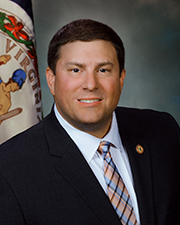by James C. Sherlock

Superintendent of Public Instruction
Sometimes common sense is not so common as we think.
Common sense will tell you that if a kid misses too much school, he or she is not going to keep up with the academics. That apparently has not occurred to the Virginia Board of Education or the Department for which it sets policy.
Chronic absenteeism in Virginia is defined as missing 10 percent or more of the school year – more than 18 days.
The chronic absenteeism that VDOE reports to the federal government correlates directly with SOL math, reading and writing failure rates for all students, white students, black students, Hispanic students and economically disadvantaged students. Directly. In each subgroup. In every subject.
Yet the Board of Education did not see fit to deliver that information to the Governor or the General Assembly in its 2020 Annual Report on the Condition and Needs of Public Schools in Virginia. The word absenteeism appeared nowhere in that report in which structural racism, teacher quality and money were featured as causes of minority academic failures.
With new information about the role of central role of chronic absenteeism in hand, perhaps the Governor and the General Assembly might legislate to help fix it.
Or perhaps not, but at least they would know that is measurably the most important element in academic failures by black, Hispanic and economically disadvantaged kids.
And the lack of chronic absenteeism is perhaps the most important factor in the outperformance of Asian kids.
Virginia’s Secretary of Education Atif Qarni, so disturbed by high achieving Asian children, might consider urging other parents to get their kids to school when they reopen.
Now can one know such things?
Take the VDOE’s online data for the 2018-19 school year on chronic absenteeism and compare it to VDOE’s online data on SOL failure rates for the same year. Both data sets are structured the same way, measuring outcomes for the same racial, economic and disability subgroups over the same school years.
Then put together a spreadsheet that displays all students, Asian, black, Hispanic and white rows with columns for both chronic absenteeism and SOL failure rates.
The VDOE may never have done that. Take a look.
Chronic-Absenteeism vs. SOL failure rates
You will notice that there is not a single variation from direct correlation between chronic absenteeism and SOL failure rates. Not one. Again, for any subgroup, for any subject.
What to do? The Code of Virginia Title 22.1 Education, Chapter 14 Pupils, Article 1. Compulsory School Attendance should be reviewed in its entirety to address the clear and critical need to get children in school. Indeed the extraordinary percentage of students chronically absent suggests it is not routinely enforced.
One example.
Code of Virginia § 22.1-258. Appointment of attendance officers; notification when pupil fails to report to school; plan; conference; court proceedings. Right now the appointment of attendance officers by school boards is voluntary. Otherwise someone with other responsibilities kicks it up as a part time job.
The data show that fewer than a third of Virginia’s schools have chronic absentee problems, and the VDOE knows which ones those are. If they don’t, I’ll look it up for them in their data.
Some jurisdictions with the worst attendance problems, unsurprisingly the ones with the worst SOL scores, likely need more than one attendance officer.
Richmond needs a lot more. In 2019 Richmond laid off more than half of its attendance staff and hired a Director of Equity. Halfway through the school year in early February of 2020 before the pandemic, 17.5% of Richmond public school kids were chronically absent, roughly 4,400 children. Accountability? None.
Virginia law making assignment of full time attendance officers voluntary is not a good start when one reviews the extraordinary responsibilities placed on them by the rest of Article 1 Compulsory School Attendance to get kids in school and make sure they show up every day or have a valid excuse.
Can we ask for honesty and competence in State education appointees?
As for the Board of Education and VDOE, yesterday I demonstrated that the Board lied to make their point in their December 1 report to the Governor and General Assembly.
Both yesterday and today I have demonstrated repeatedly that both the Board and the VDOE are profoundly incompetent at the leadership levels.
Next time they may wish to talk to us about attendance before they cry systemic racism. They could perhaps look at their own data.
I have to pose a serious question that the people involved need to ask themselves, or perhaps the Governor should ask them.
Why would anyone want to be appointed Secretary of Education, Superintendent of Public Instruction, or to the Board of Education or work in the Department of Education if he or she does not want to do the best for all of the kids?
Yet the evidence suggests that many of them do not. They’d rather have the issue of poor minority outcomes so they can blame it on racism.
If people truly are looking for the school-to-prison pipeline some talk about ceaselessly, I refer them to the chronic absenteeism figures. They are far larger than the discipline figures.

Leave a Reply
You must be logged in to post a comment.